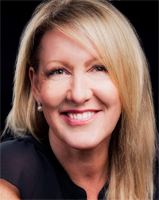Takeda Takes A Strategic Approach To TMF

By Ed Miseta, Chief Editor, Clinical Leader

Over the past five years, Takeda has been perfecting its all-in model for TMF, where both Takeda and its CRO partners collaborate in Takeda's eTMF. This enables transparency into TMF health across the partnership and drives more effective, proactive collaboration.
"While we faced challenges in using this model, we believe the benefits are great," says Wendy Beeby, Director, Clinical Document Management and Trial Support at Takeda. "We partner on the trial execution, trial optimization, the alignment of our processes, and collectively tackle issues. The model enables us to work collaboratively and in sync within the system. That has allowed Takeda to work towards one consistent model."
Beeby notes that with one model, the company is better able to focus its time, efforts, and energy. Takeda can also start to think about how it can innovate and leverage automation and digital execution. The company believes in combining technology with strong, robust processes, especially in a complex collaborative model.

"We have to be ready and able to support a robust process that we can demonstrate," she adds. "Our teams are working collaboratively in the eTMF, and that puts more focus on how we execute processes and manage documents in the system."
Become Inspection Ready
A focus for Takeda is being inspection ready and able to support regulatory submissions. For that reason, the company is always seeking to improve and better meet requirements and expectations. Doing so requires expertise from the individuals on the study teams since they are familiar with the history of the trial, vendor oversight, and the TMF.
"For the TMF to tell the story of the trial, you need experts who can speak to what happened, the risks, and any key challenges," says Beeby. "A system alone can't do that. You need the human expertise, technology, and processes to work together. We are excited to leverage technology and opportunities for innovation to support our strategy for a continual inspection-ready state."
The eTMF is one area where employees can make efficiency gains. Automation can help save time when it comes to uploading documents and performing reviews. Takeda hopes machine learning can reduce the burden for teams regarding the work they need to perform in the eTMF.
Takeda worked with its study team experts to learn how it might better leverage technology. The company hoped to learn what reports, dashboards, and tools could be used to identify quality and risk areas within the TMF.
"We take a risk-based approach for key priority documentation and leverage heat mapping and reporting so we can highlight any target areas where our teams may want to check and explore earlier," adds Beeby.
More Resources and Collaboration
"People, processes, and technology are all critical to our all-in model for TMF," says Melissa Chiasson, Director, Clinical Metrics, Analytics, Reporting & Technology (CMART) at Takeda. "Each must work together and support one another. Early on, we found the technology was helping us get to a more transparent state. Still, we couldn't be as effective as we wanted because we didn't have enough people and processes to manage the technology more collectively."
In 2019, Takeda increased its resourcing around people and processes. The company collaborated with its CROs throughout this journey to ensure everyone was working together to effectively optimize processes.
Takeda knew, as the sponsor accountable for the documentation, that the all-in model's transparency gave them greater visibility into the health of the trial. To get to a more effective all-in model, Takeda migrated its legacy studies into the all-in model (in addition to its new studies), optimizing its people, processes, and technologies. It also enabled the company to evaluate the TMF more holistically across the portfolio, leveraging the data and metadata within the eTMF platform.
“We are thinking about how we can get more predictive and advance our risk-based approach by marrying the eTMF documentation with the associated metadata and the rest of our trial operations data,” adds Chiasson.
Automation and Bots
Another area of focus for Takeda is automating processes that will allow the company to augment operational activities – those repeatable tasks that can save time and effort for employees. Their focus can then be redirected to more important areas such as quality and risk assessment.
"One example of what we've implemented is the automation of our account creation process," says Chiasson. "That effort focuses on simplifying and expediting access to the eTMF while enabling proper oversight."
Chiasson adds, "We implemented a process where someone will review an access request, determine if it is appropriate, and approve it. Then a bot will grant the access."
Takeda also is using the Veeva TMF Bot for auto-classification. The goal is to simplify the classification process for certain core documents that are easily identifiable.
Takeda also hopes to simplify the filing of email communications. The company is working on establishing a strong process to ensure the right communications are filed while also removing the burden of having to classify and file documents manually. The plan is to send them to a central location where a bot would pick them up and complete the filing process.
"This is another area where we see an opportunity to use AI and machine learning to look deeper than just the operational path," states Chiasson. "We want it to look at document quality and identify key documents that are repeatable, identical, and viable, such as an FDA 1572 (Statement of Investigator)."
The last piece of this process is looking at simplified ways of creating additional interoperability within the platform and leveraging a more platform-forward approach to sharing documents. The hope is to remove the human element from moving a document from the place where it originated into the eTMF. Documents will be retained in the source location but having them in the eTMF will simplify how inspectors can review them.
The technology solutions being used at Takeda are from Veeva. "We were interested in driving collaboration and had to ensure the technology we used was optimal to doing that," says Chiasson.
